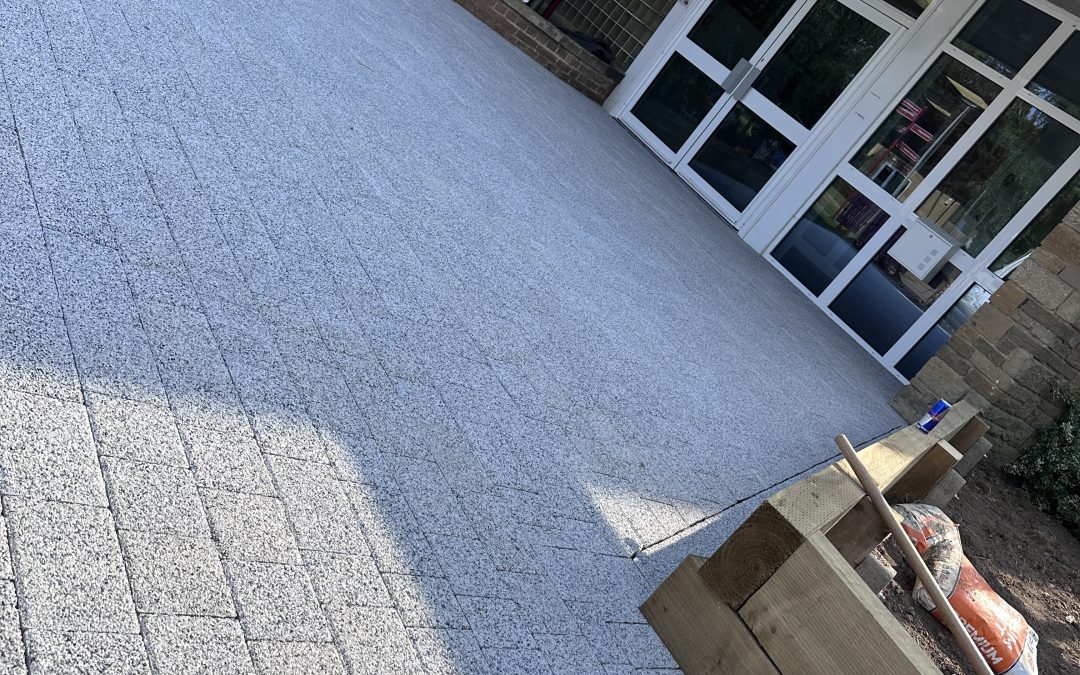Types of block paving and how to clean them
There are many different types of block paving available on the market, and each one requires a slightly different approach when it comes to cleaning. For example, natural stone block paving is more porous than concrete block paving, so it is important to use a mild cleaner and avoid using any pressure washers, which can damage the surface. Concrete block paving is less porous, so it can withstand more vigorous cleaning methods such as power washing. However, it is still important to use a mild cleaner to avoid damaging the surface. Whichever type of block paving you have, it is important to regularly sweep away any debris such as leaves and twigs and to remove any moss or algae growth as soon as possible. By following these simple tips, you can keep your block paving looking neat for years to come.
How to clean the joints between blocks
Over time, the joints between blocks can become filled with dirt, dust and other debris. This can not only make your block paving look unsightly, but it can also contribute to weed growth and difficulty when it comes to re-laying or repairing paving. If you want to keep your block paving looking its best, it’s important to clean out the joints regularly. There are a few different ways to do this, but one of the simplest is to use a power washer. Just be sure to hold the nozzle at an angle so that you don’t damage the block paving itself. Another option is to use a stiff brush and some soapy water. Again, be careful not to damage the block paving as you scrub at the joints. With a little bit of care and attention, you can keep your block paving looking as good as new for many years to come.
How to clean the surface of your block paving
Over time, the surface of block paving can become stained and discoloured. There are several ways to clean block paving, but the most effective method will depend on the type of stains and the extent of the staining. For light staining, a mild detergent or bleach solution can be used. For more stubborn stains, a pressure washer may be required. It is important to test any cleaning solution on a small area before using it on the entire paving surface. Once the block paving is clean, it is important to seal the paving to protect it from future staining.
How to remove oil and grease stains from block paving
block paving is a popular choice for driveways and patios because it is durable and easy to maintain. However, block paving can be susceptible to staining, particularly from oil and grease. If left untreated, these stains can be difficult to remove. There are a few simple steps that you can follow to help remove block paving stains:
– Cover the stain with a layer of absorbent material, such as cat litter or sawdust.
– Leave the absorbent material in place for several hours to allow it to soak up the oil and grease.
– sweep up the absorbent material and dispose of it in a trash bag.
– wash the area with a strong degreaser and then rinse with water.
– If the stain persists, you may need to repeat the process.
How to deal with moss, algae, and weeds on your block paving
Block paving is a popular choice for driveways and patios, but it can be difficult to keep clean. Moss, algae, and weeds can quickly take root in the cracks between the bricks, making your block paving look neglected. Here are a few tips for dealing with moss, algae, and weeds on your block paving:
– First, try to remove as much of the moss, algae, and weeds as possible by hand. A small paintbrush can help get into the cracks.
– If the manual removal doesn’t seem to be working, you can try using a pressure washer. Be careful not to damage the block paving with the high-powered water stream.
– You can also kill moss, algae, and weeds with chemicals. There are many products on the market specifically designed for this purpose. Follow the instructions carefully to avoid damaging your block paving.
With a little effort, you can keep your block paving looking like new.
Additional tips for keeping your block paving looking good year-round
Block paving is a popular choice for driveways and patios because of its durability and low maintenance requirements. However, to keep your block paving looking its best, there are a few simple things you can do regularly. First, sweep away any dirt or debris that has accumulated on the surface. This will help to prevent the build-up of grime, which can be difficult to remove once it gets entrenched. Second, use a hose to clean the paving blocks every month. This will remove any algae or moss that has started to grow, and it will also help to prevent staining. Finally, if you notice any cracks or chips in the paving, repair them as soon as possible. By following these simple tips, you can keep your block paving looking good year-round.
Block paving is a beautiful and practical choice for your home’s driveway, but it does require some special care to keep it looking its best. We hope you’ve found this guide helpful and that you feel confident about cleaning your block-paving driveway. If you need assistance installing or repairing block paving driveways, our team at Pro Patch Ltd would be happy to help – just give us a call.

